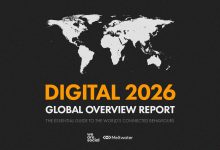MANILA – In the continuously evolving landscape of communications, the demand for dialogue and stories has gone online. That is one of the narratives shared as YouTube recently recognized the most popular ads in the Philippines for the second half of 2015. The YouTube Ads Leaderboard presented the top 10 ads on YouTube that tugged at the heartstrings of Filipinos resulting in considerable engagement on the website for the past six months.
The ten campaigns that were recognized emerged from a field that has begun to move online. They have also begun to reach a global audience without the traditional restrictions that television and radio have set. In order, the ten brands and campaigns were: 1. McDonald’s Papa Na Kita #ALDUBKoTo, 2. Nestlé Bear Brand Miconutrient Deficiency Edutainment Video, 3. Nestlé Chuckie Chuckie Buddy, 4. Resorts World Manila Woman Gets Lucky in Cinema, 5. P&G Tide AlDub commercial for Tide 6 #ALDUBabaTide6, 6. Unilever Lady’s Choice Maine Mendoza sinurpresa ang pamilya Mendoza ng Laguna, 7. Jollibee The Voice Kids I Love You Sabado, 8. Globe Express all your emotions inside and out with GoSurf, 9. Unilever Eskinol Eskinol on Wattpad: Face to Face Episode 2, and 10. Unilever Knorr Philippines Asim Kilig #KinikiligKumainMTV.
Based on the leaderboard, some key trends have become noticeable. For the first time, all ten spots on the leaderboard were occupied by local ads, marking relatable content with a unique Filipino flavor. Take the example of the Nestlé Chuckie Buddy ad which championed the classic Filipino mother-son relationship, for instance. It highlighted mothers as parents and friends to their children before ending with the line, “Minsan lang sila bata, sabayan mo na.”
Three of the 10 brands who were on the leaderboard capitalized on the phenomenon that is the AlDub craze. With its internet-breaking record numbers and massive following, the pair of Alden Richards and Maine Mendoza won the hearts of viewers as well as brands looking to capitalize on the pair’s popularity. Those three brands were McDonald’s, Tide, and Lady’s Choice (who only got Maine’s services for their family reunion ad).
With nine out of the 10 ads going beyond the usual 30-second mark of television commercials, it is proof that digital content offers a greater degree of creative freedom for brands to tell their stories. The digital space has now become an extension of what could previously only be viewed in short bursts on TV. Take the case of Eskinol’s Wattpad webisode that actually runs for five minutes and 41 seconds and is one of a series of five webisodes. It is a prime example that brands can now tell longer and more powerful stories via a platform like YouTube. These ads further showed that Filipinos on YouTube will engage with longer videos from brands as long as the brands have a great story to tell.
Another noticeable key trend is that the time-honored tradition of using memorable melodies and jingles are alive and well, though it has moved to cyberspace. Six out of the ten brands employed a catchy tune or dance moves to generate stronger brand awareness and product recall. Bear Brand’s Micronutrient Deficiency Edutainment Video might seem hard to grasp on paper, but once the jingle and visuals are playing, it is actually hard not to pay attention to it.
YouTube country manager Ken Lingan noted that there has been a 90% growth in watch time on YouTube for the past year, as well as a 50% growth in viwership via mobile devices. He also pointed out that 400 hours of video are uploaded on YouTube every minute, a staggering statistic that brands and advertisers would be smart to capitalize on. Even as the site does not want to just be a repository for commercials, Lingan shared that YouTube can fulfill the Filipino’s desire for dialogue and stories through the generation of content for specific purposes.
The Top 10 YouTube Ads Leaderboard for the second half of 2015:
<iframe width=”560″ height=”315″ src=”https://www.youtube.com/embed/hHxE2wdegms” frameborder=”0″ allowfullscreen></iframe>
1. McDonald’s Papa Na Kita #ALDUBKoTo
<iframe width=”560″ height=”315″ src=”https://www.youtube.com/embed/E_ua03zGppc” frameborder=”0″ allowfullscreen></iframe>
2. Nestlé Bear Brand Miconutrient Deficiency Edutainment Video
<iframe width=”560″ height=”315″ src=”https://www.youtube.com/embed/qmdEQ6eW39s” frameborder=”0″ allowfullscreen></iframe>
3. Nestlé Chuckie Chuckie Buddy
<iframe width=”560″ height=”315″ src=”https://www.youtube.com/embed/5J8iGzLmNRE” frameborder=”0″ allowfullscreen></iframe>
4. Resorts World Manila Woman Gets Lucky in Cinema
<iframe width=”420″ height=”315″ src=”https://www.youtube.com/embed/H34LkxHjnzI” frameborder=”0″ allowfullscreen></iframe>
5. P&G Tide AlDub commercial for Tide 6 #ALDUBabaTide6
<iframe width=”560″ height=”315″ src=”https://www.youtube.com/embed/1vppHoY4_8I” frameborder=”0″ allowfullscreen></iframe>
6. Unilever Lady’s Choice Maine Mendoza sinurpresa ang pamilya Mendoza ng Laguna
<iframe width=”560″ height=”315″ src=”https://www.youtube.com/embed/ZQN6-l5_6Rk” frameborder=”0″ allowfullscreen></iframe>
7. Jollibee The Voice Kids I Love You Sabado
<iframe width=”560″ height=”315″ src=”https://www.youtube.com/embed/3850g4ZeoBg” frameborder=”0″ allowfullscreen></iframe>
8. Globe Express all your emotions inside and out with GoSurf
<iframe width=”560″ height=”315″ src=”https://www.youtube.com/embed/AkTACq1Dtfo” frameborder=”0″ allowfullscreen></iframe>
9. Unilever Eskinol Eskinol on Wattpad: Face to Face Episode 2
<iframe width=”420″ height=”315″ src=”https://www.youtube.com/embed/zeq4H07ZUAE” frameborder=”0″ allowfullscreen></iframe>
10. Unilever Knorr Philippines Asim Kilig #KinikiligKumainMTV







